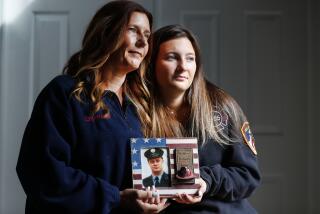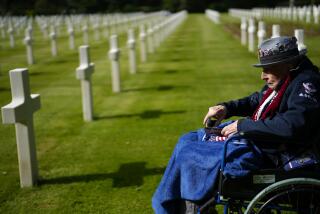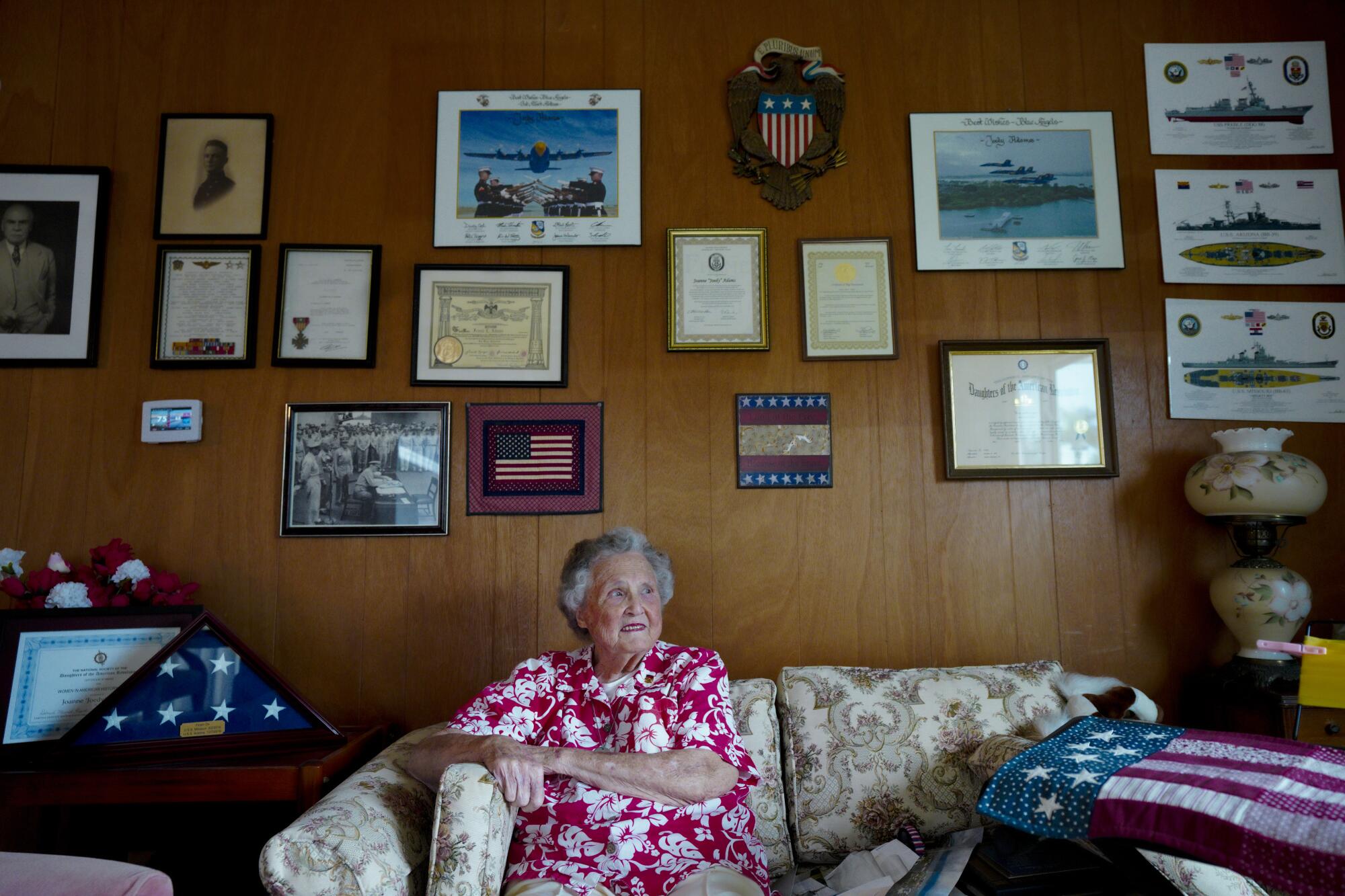
On Dec. 7, 1941, dubbed the “Day of Infamy” by President Franklin Delano Roosevelt, as Joedy Cronin Adams prepared to attend church, the roar of aircraft prompted her to step outside.
“It sounded like a huge squadron of bees swarming overhead.”
On looking up, “it was ominous — like a big, black cloud was coming over. The sky was dotted with black airplanes. I couldn’t count them. I saw red balls on the wings, but I didn’t know they were Japanese airplanes.”
Adams was 12 years old. Within two hours of gazing at a “cloud” of planes that sounded like bees, Adams saw her first corpse — a civilian casualty of war. Within that same two hours, with her mother at her side, Adams sheltered in a basement during a barrage of machine gun fire. They dodged machine gun fire again while fleeing by car.
Adams’ father, a U.S. naval commander, had recently transferred from Coronado to Kaneohe Naval Air Station, Hawaii, where the family lived in new military housing about 21 miles from Pearl Harbor.
“People say, ‘Kaneohe? What’s that?’ No one has heard of Kaneohe, but Kaneohe was hit before Pearl Harbor was hit,” Adams said.
Adams’ location where the first bombs exploded offers a different perspective of the Day of Infamy. Her childhood memories highlight the death and destruction beyond the sinking of U.S. battleships in Pearl Harbor now marked by the USS Arizona Memorial so familiar to tourists. Civilians and military personnel died throughout the Hawaiian island of Oahu.
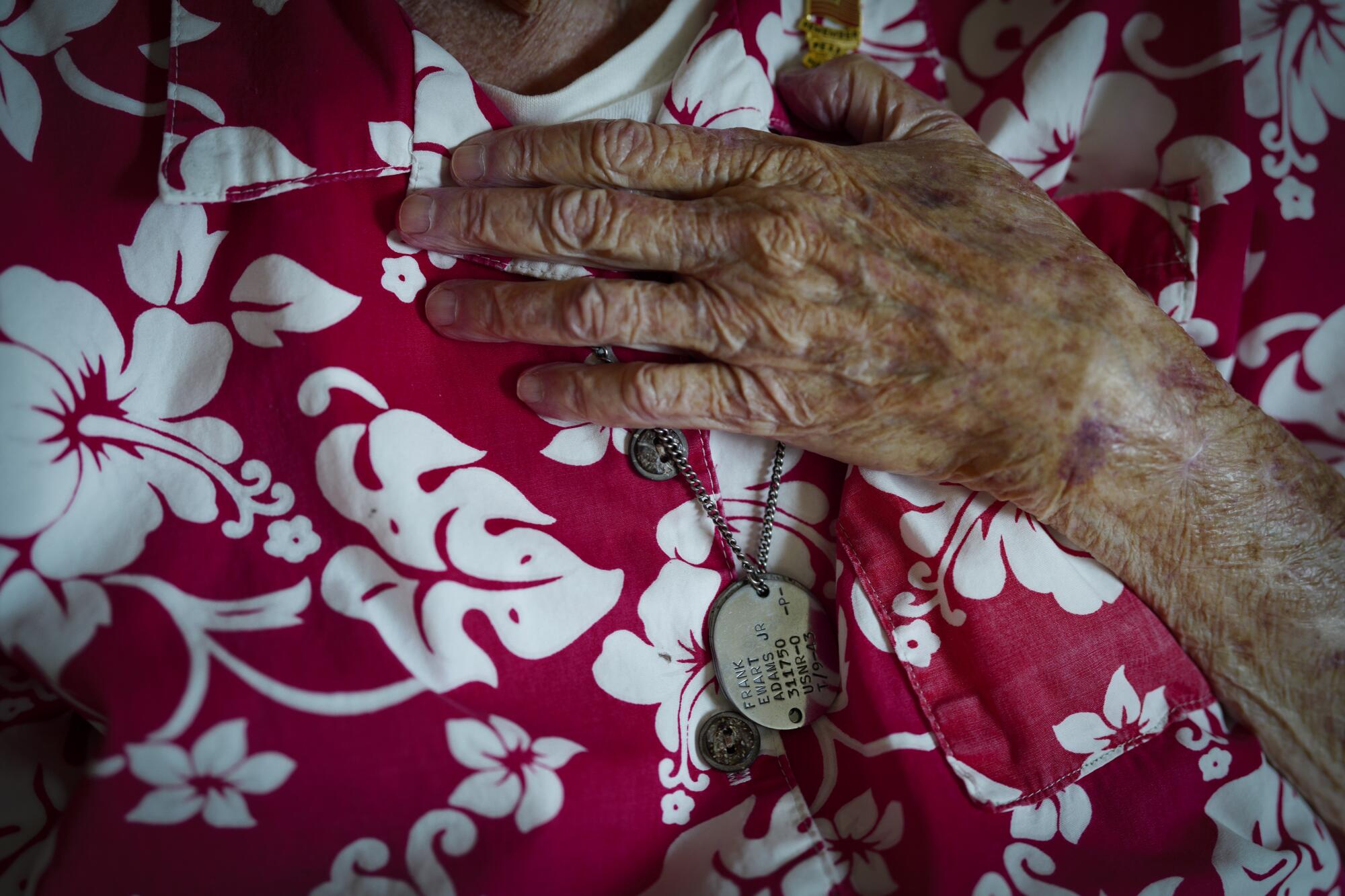
Over the years, the longtime San Diego resident has spoken to numerous public schools and various organizations, such as the Sons of the American Revolution. Now 92, Adams is among a shrinking number of Pearl Harbor eyewitnesses who speak publicly.
Stuart Hedley, one of San Diego’s best-known Pearl Harbor survivors and World War II heroes, died in August at age 99. Another, John Finn, died in 2010 at age 100. Finn is credited with downing a Japanese bomber at Kaneohe NAS. He fired a machine gun at enemy aircraft for two hours, during which time he was badly wounded by shrapnel.
“The one memory that sticks with me,” Adams said. “I saw a Japanese pilot. He was flying that low. I saw his face. He was wearing goggles. He turned his head as he was flying, and he looked down at me.”
That pilot was among many dozens who followed the street where Adams lived and turned to their bombing target: hangars housing U.S. Navy seaplanes. After dropping bombs, the pilots circled around to drop more. If enough fuel remained, they unleashed machine gun fire — striking cars, buildings and people.
“At age 12, I got my first taste of death.”
When Adams and her mother — Mary Addison Page Cronin — fled the base, Adams saw the charred corpse of a Hawaiian civilian.
“He was black from head to toe. I saw him down on the ground. Smoke was still coming out of his body. He was smoldering.”
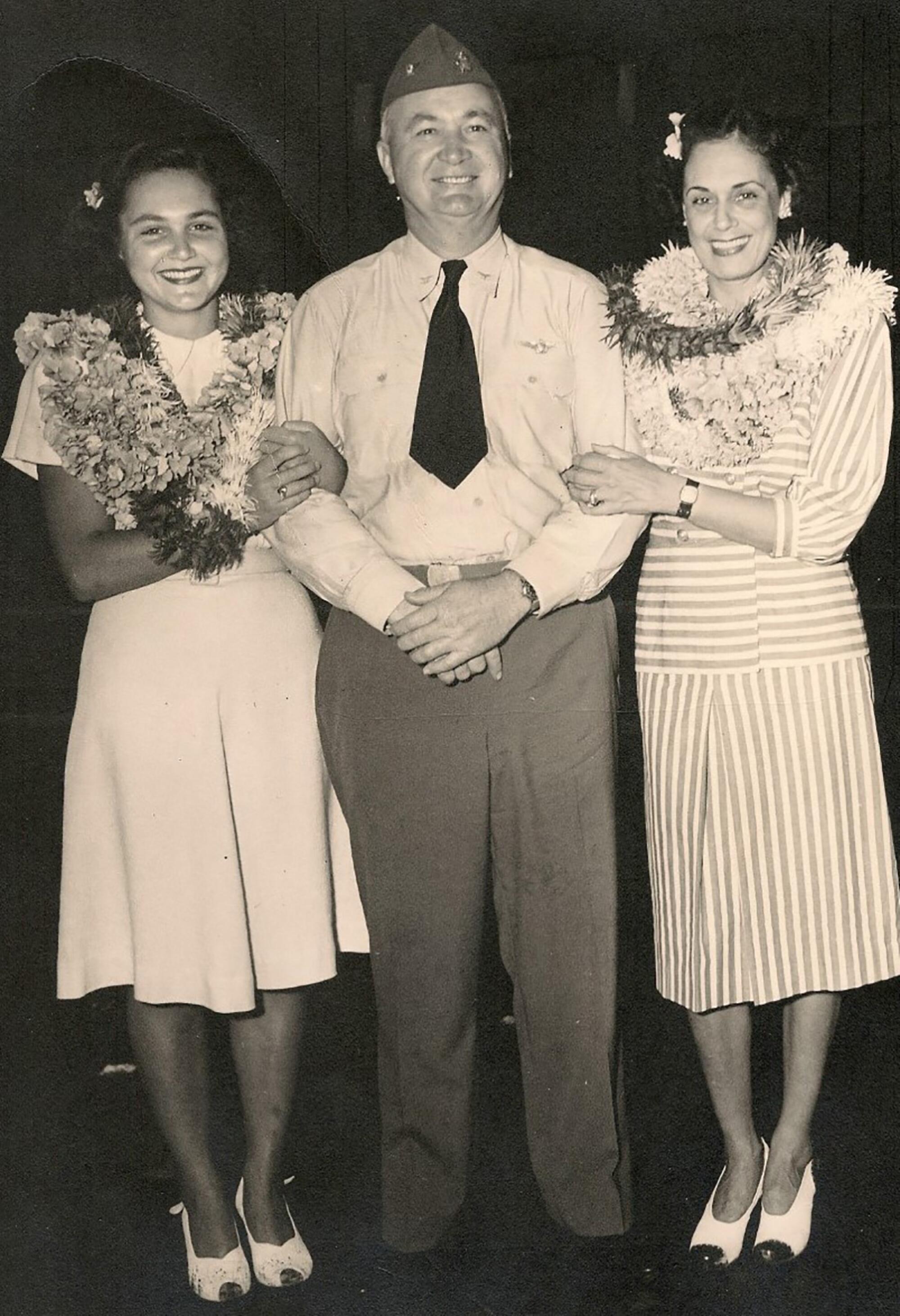
‘Part of who I am’
Eighteen naval servicemen and two civilians died at Kaneohe on Dec. 7, 1941. Their names are etched on a plaque inside the military base, which became a Marine Corps Air Station in 1952.
Adams will pay homage to the dead this Dec. 7 while attending the Kaneohe Klipper commemoration ceremony. It will be her fourth such pilgrimage. Like other military facilities on Oahu, the air base still bears the scars of bullet holes, pockmarks and bomb craters. Adams has also attended the bigger, better-known event at Pearl Harbor where oil still oozes from sunken battleships in which hundreds of sailors are entombed.
“This will be my last time,” said Adams, who has steadily lost her vision to macular degeneration and now walks with more difficulty.
Her daughter, Annette Wagner, a teacher in Colon, Mich., will accompany Adams. Growing up in San Diego, Wagner was always aware of her mother’s harrowing World War II experience, which was reinforced by her grandparents’ recollections.
“These stories are part of who I am,” Wagner said.
After attending the Kaneohe ceremony in 2019, Wagner drove along the escape route her mother and late grandmother had taken on Dec. 7, 1941.
“My mother would say, ‘It happened right about here.’ We stopped, and I would get chills,” Wagner said.
Adams’ father had instructed his wife and daughter to take refuge at a friend’s home in the Honolulu suburb of Kahala. As Adams and her mother departed the base, the Marine guarding the gate gave specific orders.
“He told my mother, ‘Drive as fast as you can.’ He told me, ‘Don’t take your eyes off the skies.’ He told us, ‘The minute you see an airplane, pull over, get out of the car and seek shelter.’”
Adams glued her eyes to the sky.
“I told my mother, ‘There are two planes at 12 o’clock at Koko Head.’ She pulled over. We got out of the car and scrambled on all fours into the bushes.”
The roar of planes grew louder. Then they heard strafing, the sound of machine guns firing, near their car. Peeking through the bushes, they saw bullets bounce off the road.
In retrospect, Adams realizes why the Marine was so insistent. The Hawaiian had burned to death because his vehicle had been strafed.
“If we had been out on the road, we would have been killed. That Marine saved our lives.”
Another reason Adams will never forget that Marine is he had burned his hands while pulling the man, already dead, from his blazing vehicle.
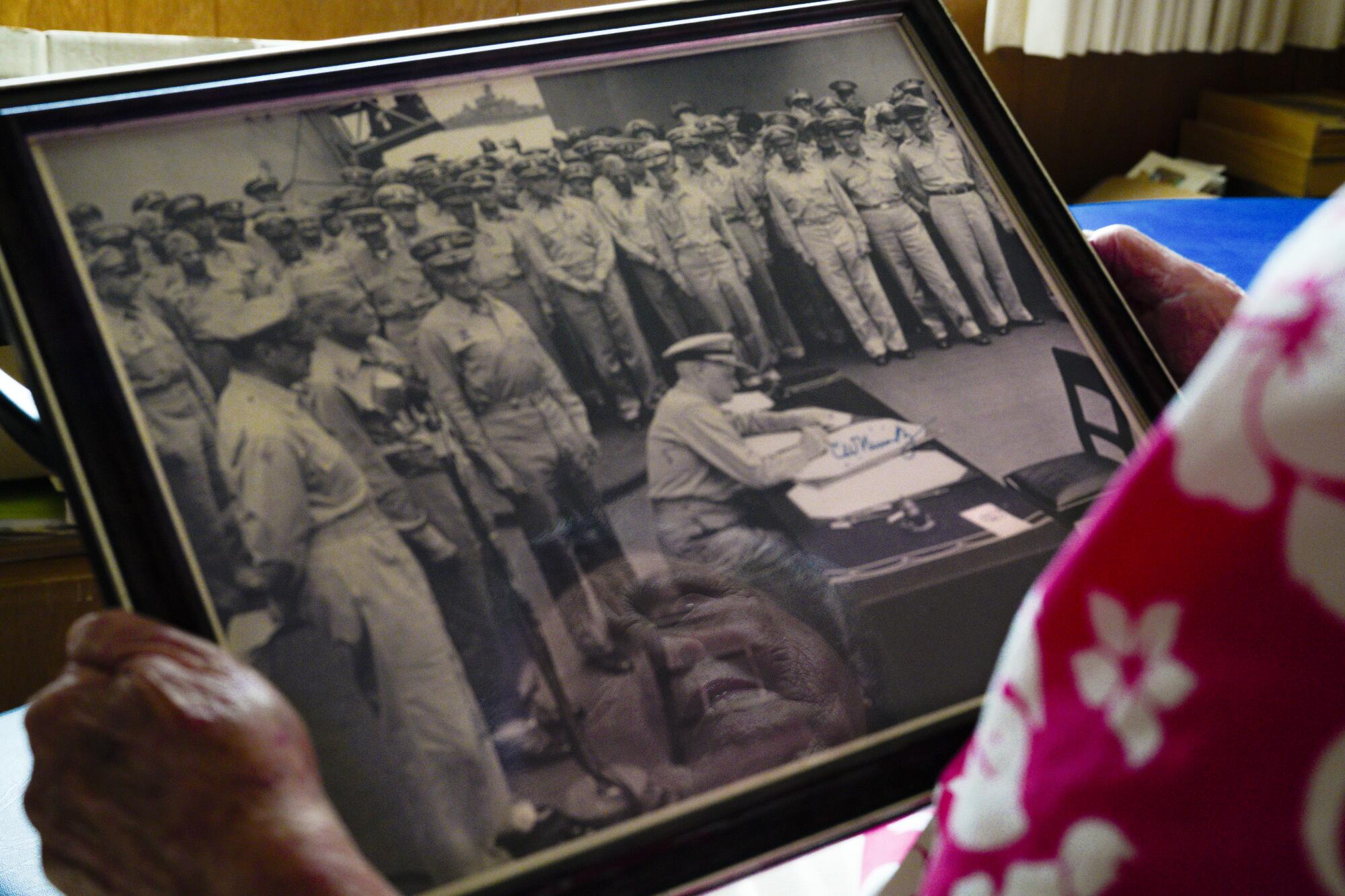
No ‘time to be scared’
Peggy Yamagata scheduled Adams to speak in November to the Daughters of the American Revolution because “these stories are vanishing.” What was striking, Yamagata said, is that Adams spoke without conveying trauma, fear or gloom and doom.
“Joedy has a tremendous sense of humor. After all she has gone through, she’s still willing to give,” Yamagata said.
Adams is often asked whether she was afraid on Dec. 7, 1941. She wasn’t.
“Children don’t look at things the same way as adults,” she said.
When Adams informed her father that the noisy airplanes had red balls on their wings, he literally jumped, throwing on his uniform over his pajamas. When Adams saw her father five days later, his “salt and pepper” hair, which had a lot of dark, had turned almost all white.
Her father, Joseph Campbell Cronin, age 42 on the Day of Infamy, was not one to “talk shop” at home, much less share his World War II experience, Adams said. In a rare disclosure, Cronin described seeing a young sailor blown apart by a bomb that Dec. 7.
While her father raced to the aircraft hangars, Adams and her mother joined other women and children in the basement of the bachelor officers’ quarters. The machine gun fire “was so loud,” Adams said, “it hurt our ears.” When it stopped, “a Marine came to the basement and said, ‘Get out of here!’ I didn’t see a window left in that place when we got out.”
As Adams and her mother ran home to pack a few things and leave, “I didn’t know what to think or what to feel. Things happened and kept happening. We just kept moving.” Much later, as an adult, Adams has marveled at her mother’s composure and calmness.
“We didn’t have time to be scared.”
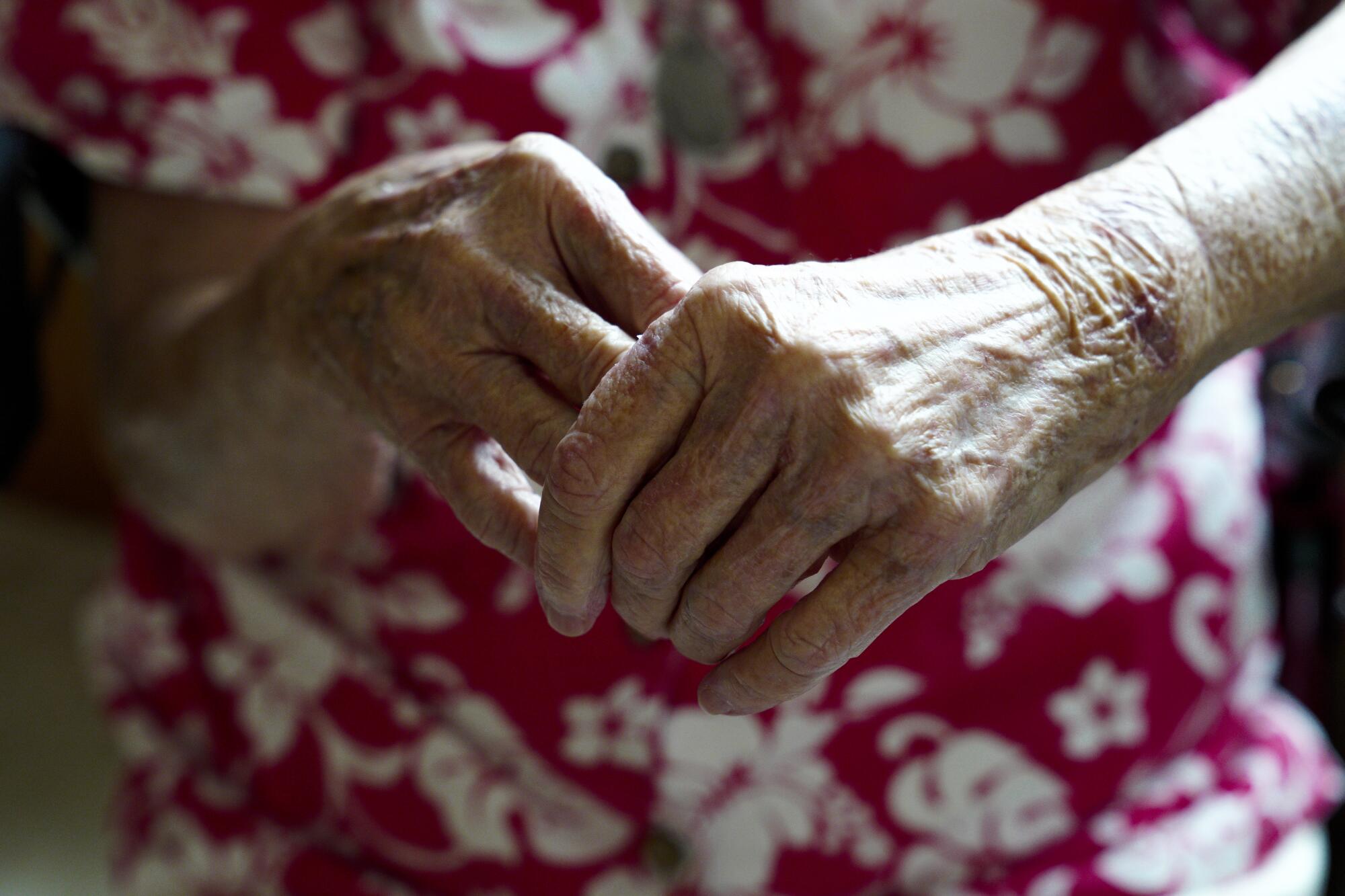
Time to remember
Adams’ map of Oahu has places underlined in red where sailors, Marines, soldiers, airmen and civilians died that day. Besides the USS Arizona and other battleships in Pearl Harbor, they include Schofield Barracks, Wheeler Field, Ewa Marine Corps Air Station, Pearl Harbor Naval Base, Ford Island Naval Air Station, Hickam Field and Bellows Field.
Because these sites are active military bases and off-limits to the public, the devastation beyond the battleships isn’t well-known, said Jessie Higa, a Joint Base Pearl Harbor-Hickam historian tour guide contractor. As a volunteer, Higa helps plan some of the smaller commemorations, including the one at Hickam Field, where she lived for 10 years before her husband retired from the Air Force.
“People forget that Hickam had the third-highest casualty toll. One hundred and ninety airmen, civilian employees and Honolulu firemen died outside on our lawns and streets. These are all historical sites that were bravely defended on Dec. 7.”
Higa knows Adams via the Sons and Daughters of Pearl Harbor Survivors, some of whom are eyewitnesses. Since 1991, Higa has collected their stories and made it her mission to introduce survivors and their family members to military families currently living in pre-World War II military housing.
“It’s a living history,” she said. “It’s important to connect the generations.”
Wagner, Adams’ daughter, said returning to Kaneohe is intensely poignant and meaningful.
“When we’re there, we’re repeating these stories, and there’s more to bring back memory,” she said. “You’re feeling the air, feeling the breeze, feeling the sun. It becomes more vivid to my mother and more emotional.”
The Day of Infamy is a time to shed light on a hideous irony of war as well as to remember. The death toll from Japan’s attack on Oahu includes 32 civilians who died in downtown Honolulu on that day. They fell victim to “friendly fire” from U.S. Navy anti-aircraft artillery that went awry. Higa’s great-uncle and a baby cousin were among those killed.
“Eighty years later, families are still hurting from their losses that day.”
Hagstrom is a journalist and author of “Sara’s Children: The Destruction of Chmielnik,” a World War II history text documenting the survival of five siblings in Nazi Germany’s death camps. Hagstrom’s late parents attended Coronado High School with Joedy Cronin Adams in the late 1940s.
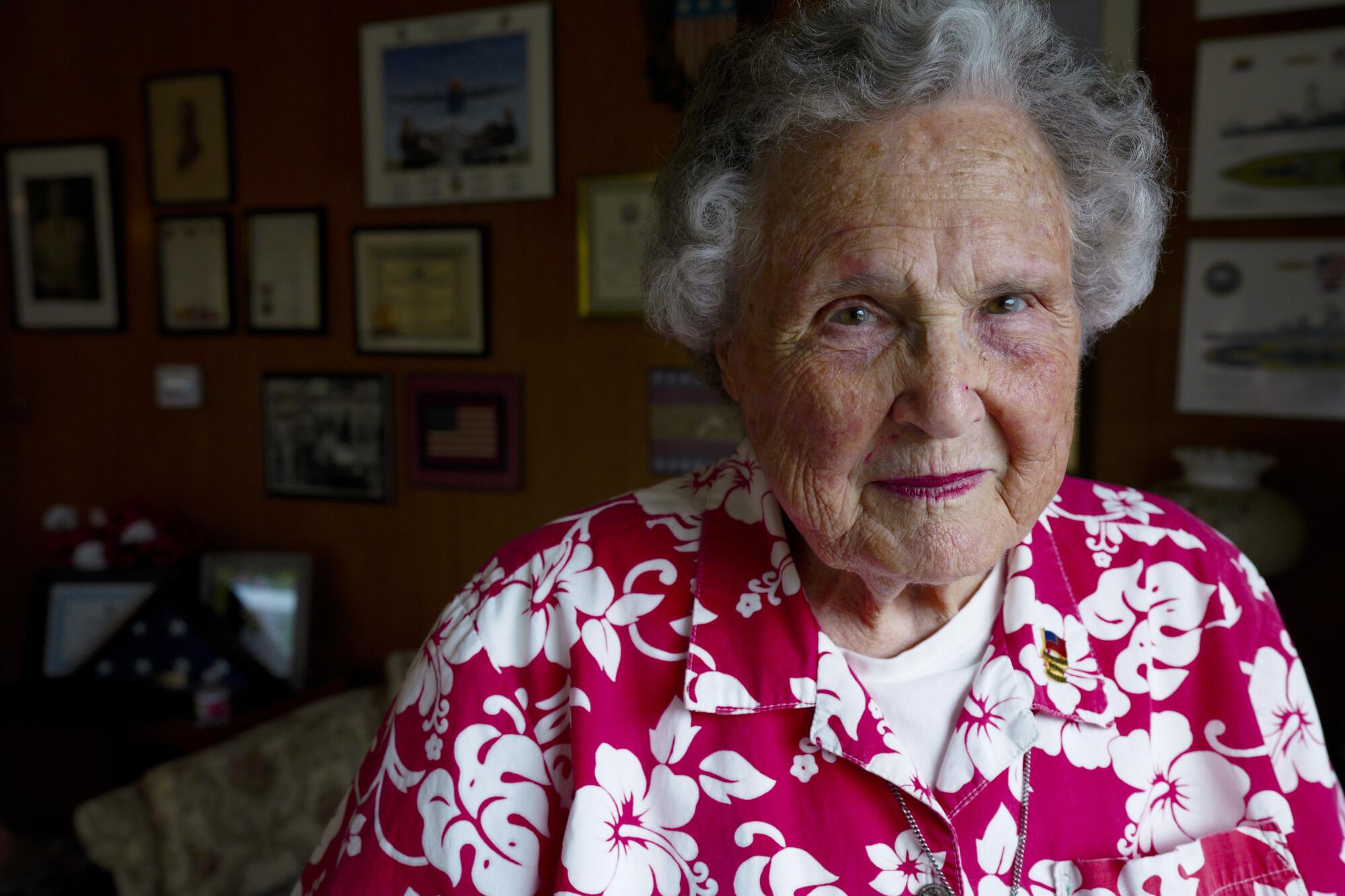
More to Read
Sign up for Essential California
The most important California stories and recommendations in your inbox every morning.
You may occasionally receive promotional content from the Los Angeles Times.

